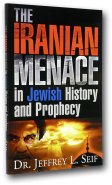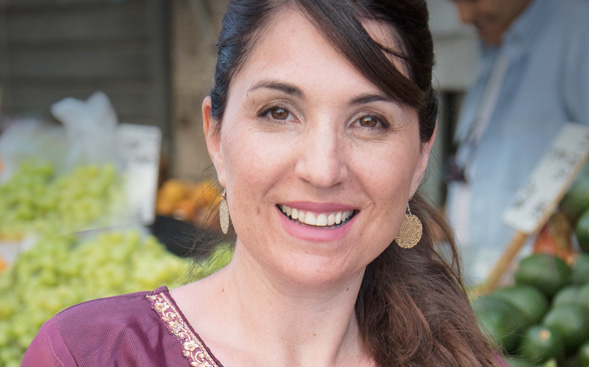
FROM SARAH, OUR SABRA
ON THE GROUND IN ISRAEL
Dear Friend,
Shalom from the Holy Land. In February, I wrote of the primary threats facing the State of Israel in 2022, as detailed in a report from the Israeli Institute for National Security Studies (INSS). The most prominent threat noted by the INSS was a nuclear Iran.
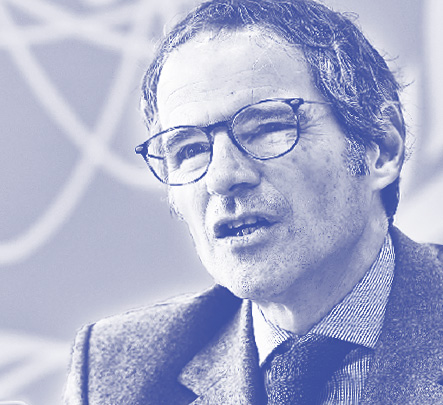
credit: IAEA Imagebank

International Atomic
Energy Agency
In the 2015 “Iran Nuclear Deal,” Iran agreed to dismantle much of its nuclear program and open its facilities to more extensive inspections in exchange for relief from the sanctions costing the country billions of dollars. Since then, however, Iran has resumed its nuclear activities.
Iran’s Nuclear Aspirations
Negotiations between Iran and other countries (including the U.S.) on returning to the 2015 deal slowed to a grinding halt during the first half of 2022. Then in early June, the United Nations’ International Atomic Energy Agency (IAEA) warned that Iran is continuing to pursue its nuclear program while intentionally turning off cameras installed by the agency to monitor activity in its nuclear plants.
“It’s a matter of just a few weeks,” said Rafael Grossi, director general of the IAEA, when asked about the significant quantity of enriched uranium that Iran possesses. While Iran apparently has enough uranium to make a nuclear weapon, Grossi added that this does not mean they have created such a weapon.
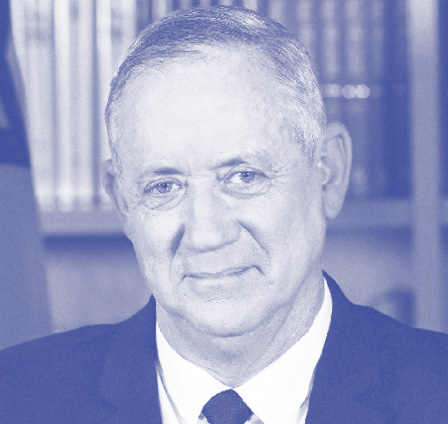
credit: Avi Ohayon, GPO

Israel’s Ministry
of Defense
Israel, however, does not want to wait until Iran develops a working weapon, something U.S. officials estimate could take up to two years. Therefore, Israel is asking for international support to act against Iran now. Benny Gantz, Israel’s defense minister, told U.S. officials in May that “the cost of stopping Iran will be higher in one year.”
A Battle in Progress
Recently, several top-level security officials in the Israeli government and leaders of secret military development programs (who would normally not reveal themselves) went on record to describe what seems to be a battle already in progress between the two countries. This is unprecedented, yet most of what has been happening is not being reported by the news media.
Most of the world is focused on Iran’s nuclear aspirations related to a weapon. But in the Middle East, another threat has prompted historic geopolitical changes and a focus on developing new technology to handle the advancing danger.
In Israel we are hearing the terms KATMAM and KATBAM — both of which refer to Unmanned Aerial Vehicles (UAVs). These remotely piloted drones are a rapidly developing technology. They vary in size from one pound to many tons and may not have the shape of a traditional aircraft. While they provide surveillance and can strike targets using onboard missiles, UAVs can also engage in electronic warfare, destroy enemy air defense systems, and much more.
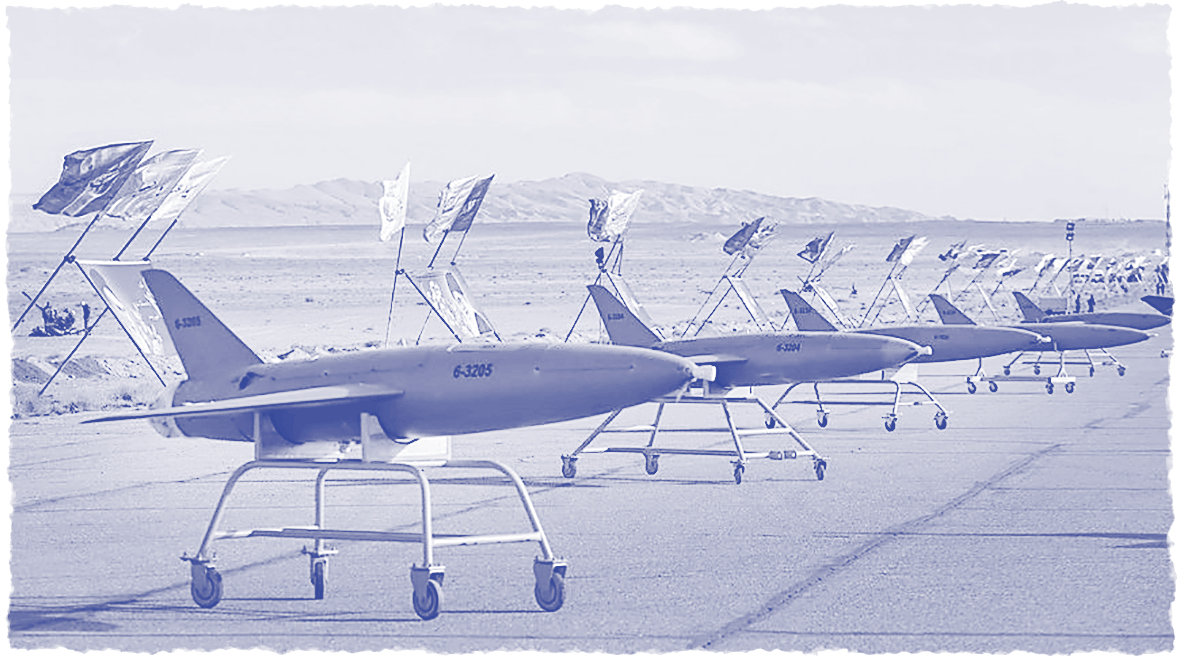
credit: Iranian Army via AP
Imagine this scenario: Two trucks drive on a road in northeast Lebanon, far from Israel. Anyone passing these trucks would likely think they are regular delivery trucks. But each truck stops on the side of the road and opens the back, lifting a ramp. The ramp holds a launcher armed with five “suicide” UAVs (designed to explode on a target), each with a range of over 1,200 miles. Controlled by Hezbollah, the UAVs launch simultaneously toward the Haifa Bay seaport. Even if only one hit its target, the second largest port in Israel would be shut down.
Previously, Iran had no technology that enabled it to effectively attack Israel since the countries are about a thousand miles apart. Now, however, Iran has the capability of striking Israel even from a significant distance.
This threat intensifies when we consider another scenario: Imagine Iran, Iraq, Lebanon, Syria, and Yemen all sending swarms of UAVs to attack Israel at the same time. Currently, we have no way to defend against such an incident.
The number of drone attacks in Israel is growing. In February 2018, an Iranian UAV armed with explosives took off from Syria toward the Samaria region. Israel detected the drone when it reached Israeli airspace and shot it down with an Apache helicopter. More recently, the Israeli Air Force revealed three Iranian-built UAVs that were intercepted after they crossed into Israeli airspace.
Challenges for Defense
Outside of the technological challenges of dealing with UAVs, there are other problems related to the cost. Developing UAVs is fairly inexpensive, especially compared to the cost of developing larger long-range missiles. This is an easy win for Iran. But using an aircraft to destroy a UAV, if it can be done, is not only costly but also impractical because of the size differences.
How did Iran get these sophisticated capabilities? In 2011, Iran intercepted an expensive UAV built by Lockheed Martin that was flying a reconnaissance mission. Thus, they began developing their own prototypes based on the drone’s advanced technology. Later, an Israeli drone went down over Lebanon. Hezbollah sent it to Iran, which used that technology to enhance its drone developments.
In December 2019, a synchronized drone swarm caused great destruction when it hit Saudi Arabian oil production sites. Israel then recognized that Iran’s UAVs posed a significant and impending threat.
The attack exposed Saudi Arabia’s vulnerability. It also encouraged the speedy signing of the Abraham Accords peace agreement between Israel and some Gulf states. These agreements permit Israeli technology and military presence much closer to Iran, thus closer to where the threats originate.
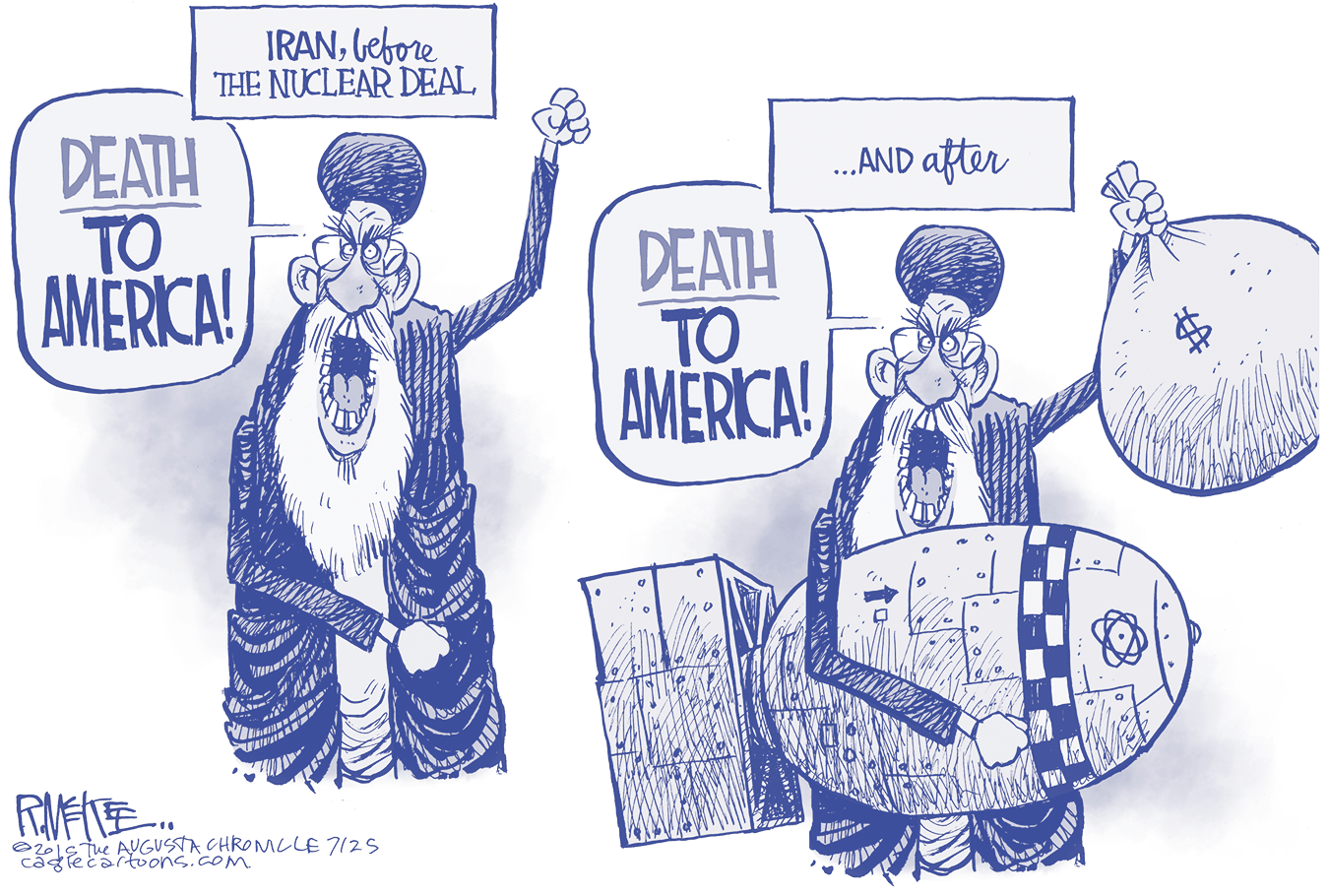
Israel is also preparing multiple levels of defense that include the Israeli Air Force, new technology like the Iron Dome, foreign and domestic intelligence, and more to defend against Iran. We now know that Israel has placed a powerful UAV-detecting radar in the Arab country of Qatar. Until recently, that would have been considered a fantasy.
The most astounding news released in the last few months concerns the interception of two large Iranian UAVs in March 2021 — in the airspace of a country between Israel and Iran (possibly Saudi Arabia). Israeli F-35 fighter jets flew east toward the suspected drones, not knowing what to expect or where they were. It was a dark night, and the UAVs flew very low and slow. The fighter pilots had to locate the drones, slow their aircraft, and then take out their targets before they reached Israel. This was the first time that an F-35 fighter jet had shot down a UAV.
In February of this year, Iran launched two more UAVs toward Israel. American fighter jets shot them down over Iraq. Less than 48 hours later, a drone counter-attack destroyed over 100 Iranian UAVs. The foreign press claimed that Israel carried out this reprisal. While the retaliation revealed attack drones on or near Iranian soil, it also showed that Iran has the capability of launching drone attacks.
Our Response
In Psalm 122, David encourages the people: “Pray for the peace of Jerusalem … For the sake of the house of the Lord our God…” (Psalm 122:6, 9). David knows that God’s presence in Jerusalem — the place of His dwelling on Earth — will be continually attacked. The devil would love to destroy not only the people whom God has called His own but also their land.
Even though Israel is not fully walking according to the will of God today, God’s faithfulness to His promises to Israel — and through them to all the nations of the Earth — remains steadfast. God does not change; He is constant. He will fulfill His purposes; we trust in this. I believe in the supernatural power of God to protect Israel. Yet I also know God asks us to pray specifically for this land and this nation. Will you join me in doing this?
Im tirdefu lada-at oto —
“Press on to know HIM!” (Hosea 6:3 NLT),
Sarah Liberman
P.S. Psalm 122:5 says that “the thrones for judgment” are in Jerusalem. While God is faithful, He will not deal lightly with those who reject His choice. As you pray for the peace of Jerusalem, would you also pray for the Iranians? ✡
 : It’s a Good Land
: It’s a Good Land
Deuteronomy 8:7–8 describes the land of Israel as “a land with brooks, streams, and deep springs gushing out into the valleys and hills; a land with wheat and barley, vines and fig trees, pomegranates, olive oil and honey.” That good land is very much alive and overflowing with all of the above.
The Holy Land is the only land promised to a people by the Creator Himself. But even more incredible is that you and I can go there! We can walk in that beautiful land, a land of fulfilled prophecy. Honestly, there isn’t anything like it this side of Heaven.
Sandra, our travel manager, would love to help you take your study trip to Israel. She makes enrolling easy. You can contact Sandra at 214-696-9760, travel@levitt.com, or levitt.com/tours. Then, start packing and preparing for an unforgettable Bible study adventure.
| Deluxe — Israel | Oct. 24–Nov. 3 | $5,688 |
| Grand Petra — Israel & Petra | Oct. 24–Nov. 6 | $6,788 |
| Deluxe — Israel | March 13–23 | $5,788 |
| Grand Petra — Israel & Petra | March 13–26 | $7,288 |
A Note from David and Kirsten Hart
TWO NEW SERIES ARE COMING
Our entire television production team for Our Jewish Roots (OJR) has been very busy this summer! We recently returned home from a week of TV taping near Fort Worth. We finished two complete series in four days (whew!). Our upcoming series on Peter is officially, as we say, “in the can.” This new study series has been a long time coming. We were set to film it before COVID hit. Soon, you’ll be able to enjoy one of the most beautiful OJR series we have ever developed
We also finished our series on the prophet Jeremiah. Dr. Seif filmed all the teaching segments ten years ago, but we updated the studio segments on our new set. This series on one of the Old Testament’s major prophets is as timely as ever. You’ll notice that Dr. Seif looks impressive on our new set! Since finishing his doctorate at Cambridge University, he’s been sporting a coat and tie. Look closely at his ties and let us know if you see the “emblem” he is displaying.
Both series contain eight programs, with an added extended interview and summary as the ninth program. You won’t want to miss a single episode of the teaching, dramas, interviews, and new music. Set your DVR or do whatever you need to prepare to watch OJR each week.
GALILEAN BEAUTY
The places where Dr. Seif taught in our Peter series are absolutely stunning. Words cannot describe the beauty of the Galilee in springtime. After weeks of rain, the wildflowers displayed their splendor. The Kinneret (Sea of Galilee) proudly revealed its ruggedness. With the additions of the actors and sets, as you watch you will feel like you were there with Peter almost two thousand years ago. While we’ve mentioned our excitement about this new series in previous Personal Letters, you will soon discover that it’s worthy of a reminder.
We always love hearing your takeaways after watching our programs, and we actually read all of your emails and messages. What is my (Kirsten’s) personal takeaway from Sarah’s writings in this letter? Praying for the peace of Jerusalem isn’t just a saying; it could be the difference between life and death for many Israelis. We are standing in prayer for Israel and Iran!
Sha’alu shalom Yerushalayim! —
“Pray for the peace of Jerusalem!” (Psalm 122:6),
David & Kirsten
P.S. Did you know that Our Jewish Roots is viewed around the world? We hear from viewers across the globe. Financial gifts to this ministry enable people we may never know to discover the love and grace of our Savior Yeshua through weekly television programs, monthly newsletters, levitt.com, and more. When you partner with us each month, you help to ensure the future of our global outreach. For this we offer a grateful thank you! ✡
Our Jewish Roots TV programs in August
This month, we begin with a stand-alone program about the preparations being made for the next Jewish Temple. This is a fascinating special episode, especially if you are interested in End Times prophecy. This 30-minute program flies by; you may want to watch it again to catch every prophetic nuance.
- Temple Preparations
- Besides seeking suitable candidates for a red heifer without defect, other preparations are taking place for the next Temple in Jerusalem. These include gathering ingredients for the incense offerings, training for the priestly duties, and creating articles to be used in ceremonial worship.
We’ll then present an encore of one of our best-loved series, Faith of Our Fathers.

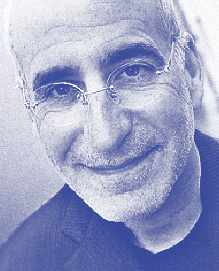
Faith of Our Fathers
Dr. Jeffrey Seif shares brilliant parallels between people whose faith contributed to building the ancient nation of Israel and faithful individuals of a future generation who developed a Godly nation in the New World. In addition, Christian historian David Barton presents original source documents chronicling many of the U.S. Founding Fathers’ Christian beliefs and their monumental efforts to anchor this nation to the belief in the God of Israel.
- What is Faith?
- The Lord called many people in the Bible (including Abram, Noah, and David) to take risks. Trusting in God’s Word was essential for the Hebrew people and for many of those who came to create a nation in the New World.
- Faith by Trial
- Neither personal ambition nor comfort are goals for a life of faith. Our examples are Noah, the ark builder, and Zerubbabel, the rebuilder of the Temple. The Mayflower brought Pilgrims who based their New World “promised land” on a Biblical lifestyle.
- Faith in the Unseen
- Even small faith can become something spectacular. Christopher Columbus heard the Holy Spirit encourage him on his four voyages to the New World. Historical records reveal his devotion and desire to serve the Lord.

 Zola Levitt Ministries is ECFA approved and has Charity Navigator’s top rating of 4 stars, plus Ministry Watch’s Give With Confidence Score of 100.
Zola Levitt Ministries is ECFA approved and has Charity Navigator’s top rating of 4 stars, plus Ministry Watch’s Give With Confidence Score of 100.


